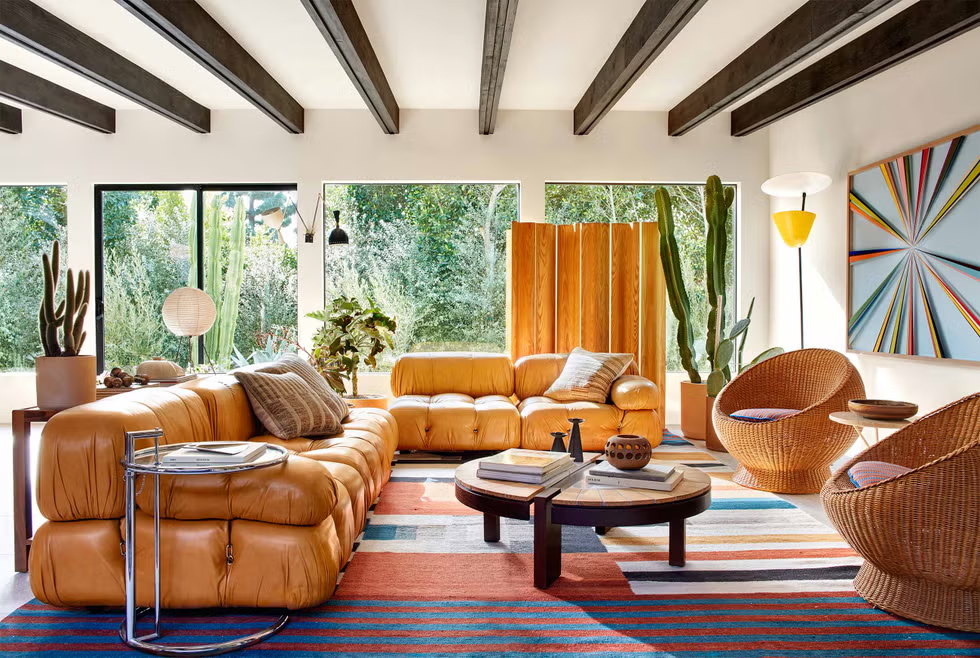Mid-century modern interior design has become a hallmark of sophistication, simplicity, and functionality. Rooted in the design movement that gained momentum between the 1940s and 1960s, mid-century modern styling merges organic influences with sleek lines, natural materials, and an emphasis on form following function. When executed well, a mid-century modern home radiates timeless charm while embracing contemporary needs. This article explores how to style a mid-century modern home to craft a cohesive, elegant, and livable interior design.
Understanding the Mid-Century Modern Aesthetic
Before diving into the styling tips, it’s essential to understand the core elements of mid-century modern design. The aesthetic values minimal ornamentation, clean geometric lines, flat planes, and a mix of both natural and man-made materials. Furniture typically features tapered legs, functional forms, and gentle curves. The use of color often blends neutral tones with bold pops of mustard yellow, olive green, teal, burnt orange, or even brick red. Overall, the look feels uncluttered yet warm, retro yet modern.
Step 1: Start with a Neutral Foundation
To build a true mid-century modern space, begin by establishing a neutral backdrop. Use shades such as white, beige, light gray, or warm taupe for walls and large surface areas like floors and ceilings. These hues provide a calm and clean foundation that allows furniture and décor to take center stage. If you’re working with hardwood floors—a common element in mid-century homes—consider refinishing them to highlight their warm natural tones.
Step 2: Incorporate Iconic Furniture Pieces
Mid-century modern furniture is instantly recognizable. Look for statement pieces with sleek silhouettes, wooden frames, and minimalist detailing. A low-slung sofa with tapered wooden legs, an Eames lounge chair, or a walnut coffee table can serve as central features in your living area. Stick to furniture that prioritizes function and comfort without excessive ornamentation.
Materials like teak, walnut, and rosewood dominate the style, so choose wood tones that coordinate and complement one another. Avoid overly bulky furniture or anything with ornate carvings or embellishments, as these conflict with the clean lines of the era.
Step 3: Use Bold Accents and Pops of Color
While the base of a mid-century modern home remains neutral, the style thrives on vibrant accent colors. Introduce splashes of color through artwork, pillows, rugs, and decorative accessories. Opt for shades like ochre, avocado green, burnt orange, or deep turquoise to add depth and personality to the space.
When incorporating patterns, geometric prints or atomic designs are ideal. Throw pillows with abstract motifs or area rugs featuring starbursts or tessellated shapes can enhance the visual interest without overwhelming the room.
Step 4: Bring in Natural Elements
Mid-century modern design emphasizes the connection between indoor and outdoor spaces. To echo this philosophy, include natural elements like houseplants, wooden furnishings, and stone or brick accents. Plants such as fiddle leaf figs, snake plants, or monstera deliciosa not only add greenery but also reinforce the organic aspect of the design.
Large windows, sliding glass doors, or skylights help to bathe interiors in natural light and make the space feel open and airy. If your architecture allows, keep window treatments minimal or opt for sheer curtains to let the light flow freely.
Step 5: Light It Up with Style
Lighting is one of the easiest ways to channel mid-century modern charm. Look for pendant lights, sputnik chandeliers, arc floor lamps, or tripodal table lamps. These fixtures often feature brass, chrome, or matte black finishes paired with frosted or opal glass globes.
Lighting should serve both a functional and decorative purpose. Place floor lamps near reading chairs, hang statement pendants over the dining table, and include dimmable sconces for ambiance. The goal is to layer lighting in a way that creates warmth and balance.
Step 6: Embrace Open Layouts and Functional Flow
Mid-century homes typically celebrate open-plan living. To emulate this, ensure that your furniture placement promotes easy movement and conversation. Avoid cluttering the space with too many pieces. Instead, focus on creating “zones” for lounging, dining, and entertaining.
If walls separate your kitchen from the living or dining areas, consider partial open-plan solutions like pass-through windows or cut-outs. These architectural elements help maintain visual flow while preserving structure.
Step 7: Add Personal Touches with Vintage Finds
A mid-century modern home is the perfect setting to showcase curated vintage pieces. Visit antique shops, estate sales, or online markets to find authentic mid-century items—like record players, sculptural ceramics, glassware, or retro clocks. These touches lend authenticity and nostalgia to the space.
However, avoid overcrowding. Select pieces that speak to your taste and blend well with the overall color palette and materials in the room.
Step 8: Keep It Clutter-Free
One of the defining characteristics of mid-century modern design is the sense of openness and order. Clutter detracts from the serene ambiance the style aims to achieve. Use smart storage options such as credenzas, sideboards, or modular shelving systems that align with mid-century design principles.
Edit your décor regularly to ensure that every item has a purpose or meaningful aesthetic value. Negative space can be just as impactful as what you choose to display.
Final Thoughts
Styling a mid-century modern home involves more than choosing retro-looking furniture. It’s about creating a deliberate harmony between form and function, modern simplicity and organic beauty. With the right balance of foundational neutrals, bold accents, iconic furnishings, and thoughtful layout, you can transform your space into a stunning tribute to one of design’s most beloved eras.
By embracing the principles of this timeless style, your mid-century modern home can feel both nostalgic and fresh—offering a stylish sanctuary for years to come.
